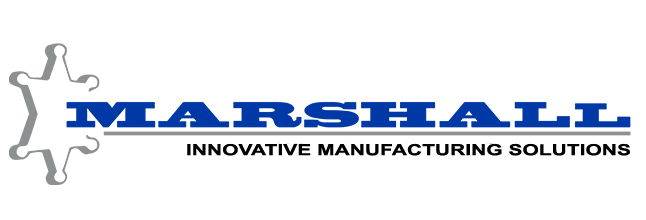Electrical discharge machining (EDM) is a commonly used manufacturing process for creating slots, eyelets, grooves and cut-offs in processed parts. Because EDM does not require high cutting force, it creates very low residual stresses, making it a powerful tool for manufacturing medical parts. But despite its strengths, there are a few key shortcomings of EDM that today’s manufacturers should keep in mind.
At Marshall Manufacturing Company, we use electric discharge machining to provide the highest quality precision components for our medical customers. Today, we’ll be walking through the advantages and disadvantages of EDM to help you decide whether it’s the right choice for your current or upcoming manufacturing project.
What is Electric Discharge Machining?
Electrical discharge machining, also known as spark machining or arc machining, is a unique manufacturing process whereby material is removed from a workpiece by a series of recurring electrical discharges. This process allows current to flow between two electrodes (separated by a dielectric liquid)—removing material from the workpiece to create specific part dimensions.
EDM is a popular solution for more demanding applications that require extreme accuracy. Thanks to its exceptional precision, the EDM process has become a common method for creating production and prototype parts spanning many industries, including automobile and electronic. EDM is also effective for crafting medical device components with critical tolerances—as its process does not introduce vibration or cutting pressure.
Small hole drilling is another form of EDM used across a range of applications (also known as small hole EDM). This process uses a separate EDM head mounted on a wire-cut machine to drill small, accurate holes in workpieces. Small hole EDM is ideal for materials that are not compatible with conventional machining—such as the high-temperature, single crystal alloys used for turbine blades.
CNC Wire EDM for Medical Devices
CNC Wire EDM is a special form of electrical discharge machining—one that uses an electrically charged metal wire to cut workpieces submerged in deionized water. This metal wire (typically made of brass) erodes conductive material in its path, while the deionized water cools and flushes away any debris the cut creates. This wire cut EDM process creates a smooth finish without burrs—and holds extremely close tolerances.
CNC Wire EDM can be programmed to cut extremely delicate and intricate shapes, making it a powerful tool for manufacturing precise medical device components. For example, Marshall Manufacturing uses CNC Wire EDM to provide precision medical components and surgical instruments to customers across the country. Our electric discharge machine wire cutting system can generate slots, grooves, holes and other part features with remarkable accuracy and delicacy—and are often used when machined features are required within a fragile portion of a medical component.
Advantages of Electric Discharge Machining
One key advantage of the EDM process is that the cutting wire never touches the workpiece, meaning that it doesn’t introduce any stresses into the part. As a result, medical device manufacturers can use EDM to generate slots, grooves and eyelets in machined parts while applying minimal stress.
Another strength of EDM is its high-quality finish. The wire cutting process creates smooth surfaces without burrs, while holding close tolerances. In fact, wire EDM can be used to build very thin eyelets and through-slots in medical devices—features that simply cannot be machined using conventional centers.
Disadvantages of Electric Discharge Machining
The wire cut EDM process removes material with electrical charges, which means it’s only compatible with electronically conductive workpieces. As a result, EDM cannot be used for machining composite or dielectric materials. Wire EDM cutting can also create a layer of oxide on the surface of the cut when used with certain metals—which must be cleaned to maintain optimal quality.
Electric discharge machining also struggles with parts and components that cannot be held firmly without compromising their shape. For example, delicate tube parts can be deformed while being secured for EDM cutting—incurring additional quality issues and workflow disruption.
The Final Verdict on EDM
All said, EDM is a potent solution for creating complex shapes in electrically conductive material, such as titanium, tungsten carbide, hard metals and exotic alloys. This technology features multiple axis movement capabilities, allowing it to cut delicate, ultra-precise shapes with close tolerances. This accuracy allows for more complex and consistent medical components that are often impossible to replicate with standard machining systems.
Harness EDM with Marshall Manufacturing
Do you have a new or existing project that requires electric discharge machining? Then be sure to connect with Marshall today! You can also contact us for more information on our innovative CNC Wire EDM capabilities—or the unique pros and cons of electric discharge machining. We’re always here to help.

